DHA awards QUASAR Phase II SBIR contract for monitoring pilots cognitive health
 San Diego, CA, USA, September 22, 2023
San Diego, CA, USA, September 22, 2023
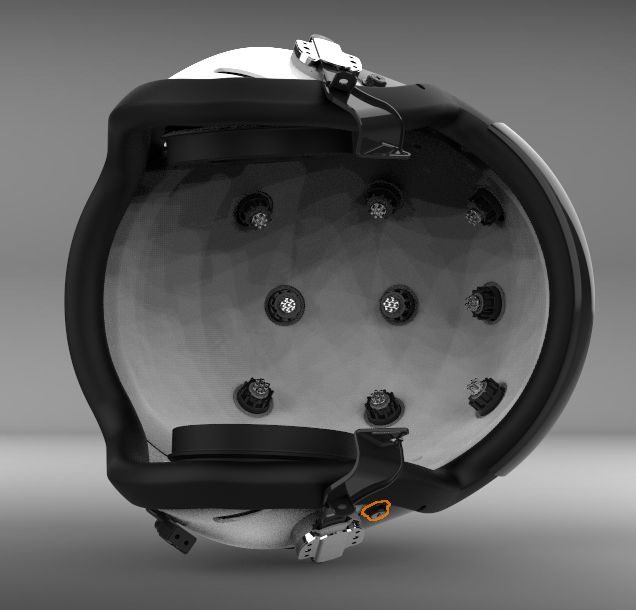 Modern military aircraft have increased in system complexity and technical capabilities to the point that they are taxing the limit of the abilities of their human operators both cognitively and physically. This presents a safety risk to pilots and passengers and can compromise mission outcomes.
Modern military aircraft have increased in system complexity and technical capabilities to the point that they are taxing the limit of the abilities of their human operators both cognitively and physically. This presents a safety risk to pilots and passengers and can compromise mission outcomes.
The Defense Health Agency (DHA) has awarded QUASAR a Phase II SBIR contract for the development of a Dry Electrode Flight helmet Integrated EEG System (DEFIES). During Phase I, QUASAR built a first functional DEFIES prototype and defined a user, airworthiness, safety, and regulatory requirements for the Phase II prototype. In Phase II, QUASAR will revise DEFIES prototype to meet those requirements, and validate its usability in a 6DOF flight simulator and a plane. DEFIES is intended to be used for pilots’ cognitive health, by monitoring hypoxia, G-LOC, fatigue, and cognitive and mental health states, for the purpose of improving mission performance and reducing accidents that are caused by adverse physiological events.
![]()
NIH awards QUASAR Phase IIb SBIR grant to develop neonatal EEG system
 San Diego, CA, USA, September 1, 2023
San Diego, CA, USA, September 1, 2023
Neonatal seizures occur in over 14,000 newborns annually in the US, and are frequently associated with long-term consequences including intellectual disability, epilepsy, and other neurodevelopmental disabilities. EEG is the only reliable means of detecting seizures; however, many Neonatal Intensive Care Units (NICUs) do not have the capability to do EEG recordings.
The National Institute of Mental Health (NIMH) has awarded QUASAR a Phase IIB SBIRto develop a Neonatal EEG MOnitor (“NEMO”) device. NEMO is intended as a reliable and easy-to-use EEG system that will increase availability of neonatal EEG monitoring to hospitals that typically lack this capability. QUASAR is collaborating with Children’s National Hospital (CNH), a top ranked pediatric hospital, for the development and testing of this system. The main goal of the Phase IIb effort is to finalize the NEMO device, validate its performance on neonates in the NICU environment, and obtain 510(k) clearance for it. NEMO could significantly improve the quality of neonatal neurophysiological care available in non-specialized NICUS.
![]()
NIH awards QUASAR Phase I SBIR research grant to reduce EEG's access disparity
 San Diego, CA, USA, August 30, 2023
San Diego, CA, USA, August 30, 2023
Electroencephalography (EEG) is useful for studying cognitive processes, neurological states, and medical conditions. Its relative low-cost, ease-of use, and non-invasiveness increase its utility in brain monitoring for both research and medical applications. Unfortunately, the process of acquiring EEG is often not inclusive of all research subjects. The approach necessary for obtaining good signals and reducing artifacts creates challenges for the hair of Black people.
The National Institute of Neurological Disorders and Stroke (NINDS) has awarded QUASAR a Phase I SBIR grant to develop A Dry Electrode for Universal Accessibility to EEG. This project aims to establish the feasibility of new tip designs for QUASAR’s existing dry electrodes that address the challenges posed by Black people's hair types and commonly associated hairstyles. The overall outcome of this project will be novel EEG electrode designs and systems that will reduce EEG access disparity for people of African origin in medical research and healthcare applications.
![]()
DHA awards QUASAR Phase I SBIR contract for monitoring pilots.
 San Diego, CA, USA, August 26, 2022
San Diego, CA, USA, August 26, 2022
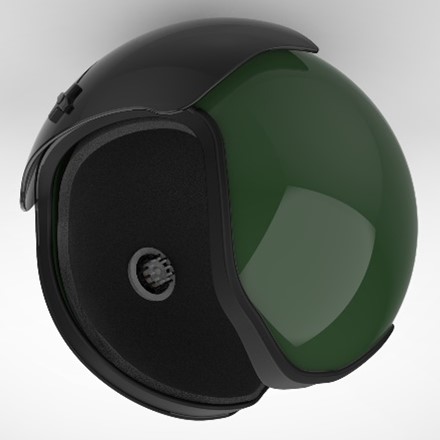 Modern military aircraft have increased in system complexity and technical capabilities to the point that they are taxing the limit of the abilities of their human operators both cognitively and physically. This presents a safety risk to pilots and passengers and can compromise mission outcomes.
Modern military aircraft have increased in system complexity and technical capabilities to the point that they are taxing the limit of the abilities of their human operators both cognitively and physically. This presents a safety risk to pilots and passengers and can compromise mission outcomes.
The Defense Health Agency (DHA) awarded QUASAR a Phase I SBIR contract for the development of a Dry Electrode Flight helmet Integrated EEG System (DEFIES). DEFIES will enable investigations into aeromedical neurophysiology, which could ultimately reduce the risks of physiological events leading to accidents. For this project, QUASAR will integrate its high-fidelity dry electrode EEG sensors into a flight helmet intended to enable brain monitoring during flight. DEFIES could be used for monitoring hypoxia, G-LOC, fatigue, and cognitive and mental health states, for the purpose of improving mission performance and reducing accidents that are caused by adverse physiological events.
![]()
US Air Force awards QUASAR Direct-to-Phase II SBIR contract for mitigating pilot fatigue
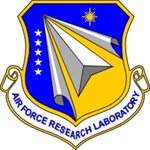 San Diego, CA, USA, July 18, 2022
San Diego, CA, USA, July 18, 2022
The National Commission on Military Aviation Safety identified that the military sustained high tempo is causing fatigue-related aviation accidents in all military branches, leading a loss of over 224 lives, 186 aircraft, and $11.6 billion due to military aviation mishaps between 2013 and 2020.
The US Air Force awarded QUASAR a Phase II SBIR contract for the development of a wearable ecG + eOg Electric Stimulator (GO-E-Stim) intended to improve cognitive performance and alertness in pilots during prolonged flights. In this project, QUASAR will develop a closed-loop wearable system for pilot fatigue assessment and mitigation. A multimodal sensor headband records physiological signals (electrooculography (EOG) and hear rate, which are processed by individualized algorithm to objectively assess fatigue. In case of pilot fatigue, the system will be able to electrically stimulate the vagus nerve using stimulators from Soterix Medical, thereby increasing the pilot’s alertness and reducing risks of fatigue-related accidents.
![]()
QUASAR and UCSD start trial for lower-back pain mitigation using Neurofeedback-EEG and VR
 San Diego, CA, USA. January 22, 2021
San Diego, CA, USA. January 22, 2021
QUASAR is working with UC San Diego Health on a study funded by the NIH’s HEAL Initiative investigating the potential of a combination of Virtual Reality (VR) and guided Neurofeedback to lessen chronic back pain.
The research project, entitled "Neurofeedback-EEG-VR (NEVR) System for Non-opioid Pain Therapy", is testing a device using QUASAR’s dry electrodes to measure electric signals from the brain and provide feedback in VR, using Healium’s immersive videos that simulate relaxing worlds and a custom VR version of Zukor’s "Air" Neurofeedback game.
QUASAR is testing this NEVR system with Krishnan Chakravarthy, MD, PhD, assistant professor of anesthesiology at UC San Diego School of Medicine and head of a pain care lab at UC San Diego Altman Clinical and Translational Research Institute.
QUASAR is excited about the potential of this device to enable non-pharmaceutical management of pain. Anyone seeking information about the study can contact QUASAR or look it up on clinicaltrials.gov under "NEVR".
See the full Press Release Here
![]()
NASA awards QUASAR Phase II SBIR contract to develop voice-based stress monitor
 San Diego, CA, USA, July 6, 2020
San Diego, CA, USA, July 6, 2020
Long-term space missions can be physically and mentally stressful, which can impact mission performance and crew health. has just awarded QUASAR a Phase II SBIR research contract to develop Individualized, Noninvasive Speech Indicators for Tracking Elevations in Stress (INSITES). The goal of INSITES is to develop an unobtrusive, objective, and reliable detector of stress that measures changes in speech and vocalizations from audio recording equipment used on spacecraft during operations, without requiring additional sensors or dedicated processing hardware. Under this project, QUASAR and the Florida Institute for Human and Machine Cognition (IHMC) will extract features in speech related to stress from audio streams and process these through artificial intelligence algorithms to classify stress in real-time. The project technology will enable NASA to continuously assess crew stress levels and intervene before increased stress adversely impacts mission safety, effectiveness, or success.

![]()
NIH awards QUASAR a grant to help end addiction
 San Diego, CA, USA. September 30, 2019
San Diego, CA, USA. September 30, 2019
QUASAR has been awarded a research grant from the NIH through The Helping to End Addiction Long-term Initiative, or the NIH’s HEAL Initiative. Initial awards from the $945 million program were announced at the end of September. The NIH HEAL Initiative aims to improve treatments for chronic pain, curb the rates of opioid use disorder and overdose and achieve long-term recovery from opioid addiction. QUASAR’s award is one of 375 grant awards across 41 states made by the National Institutes of Health in fiscal year 2019 to apply scientific solutions to reverse the national opioid crisis.
QUASAR’s project, described here, aims to create a Neurofeedback solution in Virtual Reality (VR) that will provide an alternative to pharmacological pain relief. QUASAR’s non-invasive dry electrode electroencephalography (EEG) technology will be integrated with VR-based neurofeedback protocols. This Neurofeedback EEG in VR (NEVR) system will train specific brain networks through neuroplastic reinforcement to reduce pain sensation. In this Phase I effort, a clinical trial to demonstrate the feasibility of this method will be conducted at the University of California at San Diego (UCSD) on patients suffering from chronic pain.
![]()
QUASAR Awarded $125k NASA Phase I SBIR Contract
 San Diego, CA, USA. August 19, 2019
San Diego, CA, USA. August 19, 2019
Long-term space missions can be physically and mentally stressful on the crew, which may require physiologic monitoring.
NASA has just awarded $125K Phase I SBIR research contract to Quantum Applied Science and Research (QUASAR) to develop a system to identify Individualized, Noninvasive Speech Indicators for Tracking Elevations in Stress (INSITES). The goal of INSITES is to develop an unobtrusive, objective, and reliable detector of stress that measures changes in speech and vocalizations from audio recording equipment (microphones, communications systems, computers) used on spacecraft during operations, without requiring additional sensors or dedicated processing hardware. Under this project, QUASAR and the Florida Institute for Human and Machine Cognition (IHMC) will extract features in speech related to stress from audio streams and process these through artificial intelligence algorithms to classify stress in real-time. The project technology will enable NASA to continuously assess crew stress levels and intervene before increased stress adversely impacts mission safety, effectiveness, or success.
![]()
US Air Force awards QUASAR Phase II STTR contract for improving cognitive ability and alertness.
 San Diego, CA, USA. April 26, 2019
San Diego, CA, USA. April 26, 2019
Human analysts are presented with ever-increasing amounts of data to process, taxing the limitations of human cognitive capacity. This cognitive overloading leads to increased likelihood of errors and accidents, with costly consequences in mission critical operations and potential inadvertent loss of life. Transcranial Direct Current Stimulation (tDCS) has been suggested as a potential intervention for such augmentation and enhancement of human operator cognitive abilities and performance.
The US Air Force awarded QUASAR a Phase II STTR project is to design a wearable Closed-Loop Improved Cognition (CLIC) headset for cognitive enhancement. This project will develop a closed-loop tDCS system for targeted stimulation of brain areas driven by real-time EEG-derived brain-state gauges of mental workload. The CLIC device is intended to optimally mitigate cognitive fatigue and to reduce overall stimulation time. It is designed as a fully integrated and standalone headset for unobtrusive long-term use in real-world environments. CLIC incorporates 1) QUASAR’s advanced dry electrode EEG monitoring system, 2) real-time cognitive-state classification algorithms for mental workload, fatigue, and engagement, linked to 3) Soterix Medical’s low-noise tDCS system. The Florida Institute for Human and Machine Cognition (IHMC) collaborated on this project by conducting validation testing of the system.
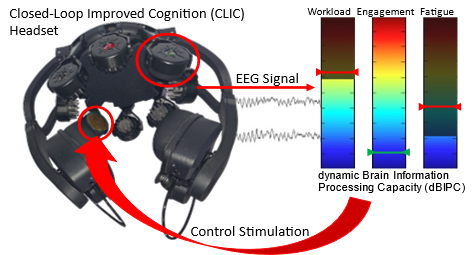
![]()
US Navy awards QUASAR Phase II SBIR contract for monitoring diver cardiac health
 San Diego, CA, USA. March 22, 2018
San Diego, CA, USA. March 22, 2018
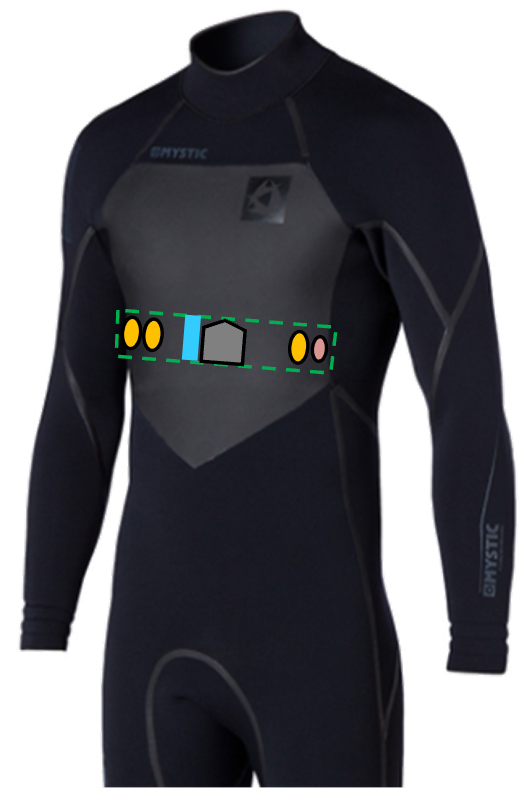 Physiological state monitoring of Navy divers is of importance in performance enhancement and research health assessment. Diver mission success requires maintenance of an appropriate gas supply, high situational awareness and avoidance of operational hazards. Divers are also at risk from health hazards such as cardiac health issues, stress and fatigue. Underwater activity is a known stressor to the cardiovascular system, and cardiac episodes are the third-largest cause of death of civilian divers, behind drowning and age-related deaths.
Physiological state monitoring of Navy divers is of importance in performance enhancement and research health assessment. Diver mission success requires maintenance of an appropriate gas supply, high situational awareness and avoidance of operational hazards. Divers are also at risk from health hazards such as cardiac health issues, stress and fatigue. Underwater activity is a known stressor to the cardiovascular system, and cardiac episodes are the third-largest cause of death of civilian divers, behind drowning and age-related deaths.
The US Navy just awarded QUASAR a Phase II SBIR contract for developing a Diver Biometric Device (DBD) to monitor diver health underwater. For this project, QUASAR will integrate a suite of novel submersible sensors to measure ECG, EEG, respiration, pulse oximetry, and skin temperature into a chest wearable device that does not require any additional waterproofing. The DBD is intended to enable operational and medical research health assessment and provide divers an indication of their health and performance status. The DBD will advance the current physiological monitoring capabilities for Navy divers and provide new capabilities to commercial and civilian divers and undersea medical research.
![]()
US Air Force awards QUASAR a STTR contract for development of a system to improve pilot cognitive abilities
 San Diego, CA, USA. November 20, 2017
San Diego, CA, USA. November 20, 2017
Because of rising demand for human analysts and more efficient processing of increasingly large and challenging amounts of intelligence, human limitations on mental workload, cognitive fatigue, and attention or task engagement, need to be accurately monitored in real-time in order to provide sensitive detection of impaired cognitive states. It is a challenge to continuously monitor these cognitive characteristics in order to implement real-time mitigations in a closed-loop feedback system.
The US Air Force awarded QUASAR a Phase I STTR contract to design a Closed-Loop Improved Cognition (CLIC) system. The overall goal of this that integrates advanced dry electrode EEG sensors with brain-state classification algorithms that produce real-time gauges of mental workload, fatigue, and engagement to control a low-noise, High Definition transcranial Direct Current Stimulation (HD-tDCS). Toward this end, QUASAR will contribute advanced dry-electrode electroencephalography (EEG) sensors with proprietary real-time brain state classification algorithms; The Florida Institute for Human & Machine Cognition (IHMC) will incorporate modeling techniques from leading experts to determine optimal stimulation parameters for alleviating cognitive impairments; and Soterix Medical will provide a transcranial direct current stimulation (HD-tDCS) system and necessary expertise to integrate it with the other components.
![]()
QUASAR awarded DARPA contract for Detection of Acute Cognitive Strain
 San Diego, CA, USA. April 10 , 2017
San Diego, CA, USA. April 10 , 2017
QUASAR recently received a research contract from DARPA to work
with the Florida Institute for Human and Machine Cognition (IHMC)
on an integrated sensor suite to Detect Acute Cognitive Strain
(DACS). QUASAR and IHMC aim to develop a military-grade wearable
sensor suite to measure ACS-related physiological changes, in
order to trigger an alarm or an appropriate mitgation. See the
press release.
![]()
Congresswoman Susan Davis visits QUASAR companies
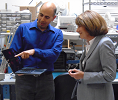 San Diego, CA, USA. October 6 , 2016
San Diego, CA, USA. October 6 , 2016
In early October 2016, US Representative Susan Davis came to visit the QUASAR companies to learn about our technology and what we can accomplish with it. In this image, QUASAR CEO Dr. Walid Soussou shows Rep. Davis a brain mapping image produced by QUASAR’s Dry Sensor Interface EEG headset.
![]()
QUASAR awarded Air Force contract to develop wearable sensor suite towards a Quantified Warrior
 San Diego, CA, USA. September 13 , 2017
San Diego, CA, USA. September 13 , 2017
QUASAR is working with the Florida Institute for Human and Machine Cognition (IHMC) on a project for the Air Force to develop a suite of wearable, nonintrusive technologies for measuring such varied physiological signals as EEG, ECG, fNIR, electrodermal response, and respiration bundled with sophisticated data processing to quantify and thus help improve operator performance. Whereas the capability to measure these signals is already available, no current tool can combine them into a unified set of outputs corresponding to the operator's physical, cognitive, and psychological state and correlating these to a likelihood of error. QUASAR's Quantified Warrior system will meet this DoD need.
![]()
Congressman Scott Peters visits the QUASAR companies
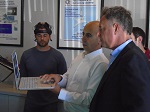 San Diego, CA, USA. July 29 , 2016
San Diego, CA, USA. July 29 , 2016
As part of his outreach to successful high tech companies in his
district, Congressional Representative Scott Peters came to QUASAR to learn a little about
our work and offer an expression of support. In this image, Rep.
Peters is listening to QUASAR CEO Dr. Walid Soussou explain how
QUASAR's Dry Sensor Interface (DSI) technology works.
![]()
QUASAR awarded Phase II SBIR NIH grant to develop a dry electrode based Neonatal EEG MOnitor (“NEMO”)
 San Diego, CA, USA. March 15 , 2016
San Diego, CA, USA. March 15 , 2016QUASAR, in collaboration with Children’s National Medical Center and POLO Custom Products, has been awarded a Phase II SBIR grant from the Eunice Kennedy Shriver National Institute of Child Health and Human Development. Conventional EEG procedures can result in damage to tender neonatal skin, with infection risk a concern, and skilled technicians are required to apply the electrodes, which means recordings may have to be delayed until necessary personnel are available to apply the system. Treatment delays increase the negative outcomes of the seizures, contributing to neurodevelopmental delays and making it more likely the infants will suffer long term epilepsy. The technology to be developed under this project will provide easy to apply, dry electrode EEG equipment that does not break the neonate’s skin. Accordingly, the team will develop an innovative Neonatal EEG MOnitor (“NEMO”) system intended as a reliable and easy-to-use EEG system that will increase availability of neonatal EEG monitoring at all hours of the day and to hospitals that typically lack this capability. NEMO leverages QUASAR’s innovative dry sensor technology that has been demonstrated to record high fidelity EEG signals that are immune to electrical artifacts, without the need for skin abrasion or the use of conductive gels.
QUASAR receives Phase II SBIR NSF grant to continue development of EEG-based Intelligent Tutoring System
 San Diego, CA, USA. Feb 15 , 2016
San Diego, CA, USA. Feb 15 , 2016QUASAR has received a Phase II SBIR grant from the National Science Foundation. Under this funding, QUASAR is building on its successful Phase I grant to further develop an adaptive computer tutoring platform that adapts its teaching strategy to each student by monitoring their brain activity. As part of this program, QUASAR will partner with its Phase I collaborator at the University of Notre Dame as well as a leader in the education market to modify measurement systems for use by children and young adults, extend computational algorithms, and evaluate the effect of adding brain-based metrics to student models that are at the core of adaptive technologies. These program objectives will be achieved by conducting studies with high school students in San Diego to demonstrate that EEG has the potential to enhance instruction by giving the tutoring system unique insight into the student's cognitive workload and engagement.
QUASAR awarded Phase 3 ROCA contract for further development of mental workload assessment
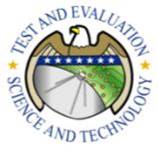 San Diego, CA, USA. September 8 , 2015
San Diego, CA, USA. September 8 , 2015After successful Phase I and II portions of the Reliable Objective Cognitive Assessment (ROCA) program, which demonstrated integration of EEG and functional Near-Infrared Spectroscopy (fNIRS) sensors into a portable headset along with state of the art mental workload algorithms, QUASAR has been awarded a Phase III contract to further system development. During this phase of the program, QUASAR will build an improved headset that will simultaneously assess Visual, Auditory, Cognitive and Psychomotor mental workloads. This headset will then undergo validation testing in relevant environments at Army Research Labortory (ARL) and Army Test Center (ATC). This project is providing significant advancements to QUASAR’s mental workload assessment algorithms to produce software that will provide a practical and quantitative metric of mental workload.
QUASAR awarded Navy contract to develop physiological sensor suite for divers
 San Diego, CA, USA. July 6 , 2015
San Diego, CA, USA. July 6 , 2015
QUASAR has been awarded a Phase I SBIR contract from the Office of Naval Research.
This project will determine the feasibility of using selected sensor modalities in an underwater environment, and investigate the trade-offs between sensor
suite designs and signal accuracy, reliability and obtrusiveness. Methods and algorithms will be defined to use sensor data to measure metrics such as diver stress, fatigue, blood oxygenation, and to detect nitrogen narcosis and high pressure nervous syndrome. This Diver Biometric Device (DBD) will advance the capabilities of Navy personnel, and commercialization of this technology will provide new capabilities to the recreational diver and civilian medical research markets.
![]()
QUASAR receives NSF grant to develop an EEG-based Intelligent Tutoring System
 San Diego, CA, USA. July 1 , 2014
San Diego, CA, USA. July 1 , 2014QUASAR has received a Phase 1 SBIR grant from the National Science Foundation. Under this funding, QUASAR is partnering with University of Notre Dame and University of Memphis to develop a computerized tutoring platform that adapts its teaching strategy to students in real-time by monitoring their brain activity. As part of this program, QUASAR will conduct trials with high school students using its dry electrode headsets to measure EEG in a classroom environment. EEG has the potential to enhance instruction by giving the tutoring system unique insight into the student's cognitive workload and engagement.
QUASAR receives Phase II SBIR grant to develop an objective tinnitus diagnostic device
 San Diego, CA, USA. May 24 , 2014
San Diego, CA, USA. May 24 , 2014QUASAR and Otosound, a leading developer of devices for treatment of tinnitus, are joining forces on this Phase II SBIR grant from the United States Army Medical Research Acquisition Activity to develop an easy-to-use, efficient, cost-effective, and objective tinnitus diagnostic device. This device will use Auditory Evoked Responses (AER) for diagnosing tinnitus and identifying its frequency range, and furthermore, it may enable assessment of severity and monitoring of treatment efficacy. Once successfully demonstrated, this device is likely to gain user acceptance and adoption as it will use QUASAR’s patented easy-to-use Dry-Sensor Interface (DSI) technology that has shown the capability to acquire the requisite high-fidelity EEG signals without any preparation of skin, which in turn simplifies use and significantly reduces set-up time
QUASAR representatives at ATA 2014
 Baltimore, MD, USA. May 18-20 , 2014
Baltimore, MD, USA. May 18-20 , 2014QUASAR and Wearable Sensing representatives will attend the American Telemedicine Association’s Annual meeting in Baltimore from May 18 through the 20th, 2014.
QUASAR is presenting its Nokia Sensing XCHALLENGE finalist technology the ECG PAD, and Wearable Sensing will showcase their latest iterations of headsets featuring QUASAR's DSI technology. Please stop by their booth inside the XPrize Pavillion for live demonstrations or to discuss potential applications.
QUASAR representatives at SFN 2013
 San Diego, CA, USA. November 7-13 , 2013
San Diego, CA, USA. November 7-13 , 2013Wearable Sensing's representatives will attend the Society for Neuroscience’s Annual meeting in San Diego, CA from November 7 through the 13th, 2013.
Wearable Sensing will showcase its latest iterations of headsets featuring QUASAR's DSI technology. Please stop by their booth #518 for a live demonstration or to discuss potential applications.
QUASAR exhibits its technology at FutureMed 2020
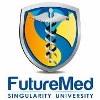 San Diego, CA, USA. November 3-5 , 2013
San Diego, CA, USA. November 3-5 , 2013QUASAR is proud to participate in Singularity University's FutureMed 2020 conference in San Diego. FutureMed explores new technologies that are driving the future of health and medicine through game-changing innovation. QUASAR is presenting its Nokia Sensing XCHALLENGE finalist technology the ECG PAD, and Wearable Sensing is showcasing its latest EEG headset.
QUASAR’s Dry Sensor Technology is a Finalist in Nokia Sensing XCHALLENGE
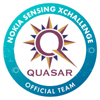 Santa Clara, CA, USA. September 27-October 2 , 2013
Santa Clara, CA, USA. September 27-October 2 , 2013On October 2nd, at the Health 2.0 conference in Santa Clara, Calif., the winner of the $2.25 million Nokia Sensing XCHALLENGE will be revealed. Quantum Applied Science and Research’s (QUASAR) ECG PAD concept of a completely unobtrusive cardiac health monitor is one of 12 finalist teams in the competition.
For more information, see the ECG PAD page, the full Press Release, or visit the Nokia Sensing XCHALLENGE site.
QUASAR licenses technology to Wearable Sensing
QUASAR is pround to announce that it has licensed its Dry Sensor Interface (DSI) technology to Wearable Sensing to develop non-invasive wearable sensing solutions for non-medical applications.
Wearable Sensing will develop, manufacture and market DSI technology and is actively developing new systems based on QUASAR's DSI designs.
Please visit their website to see these new products and contact
them directly for further information and pricing or to discuss potential applications.
QUASAR representatives in Washington DC. Nov 12-21
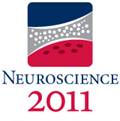 Washington, DC, USA. November 12-21 , 2011
Washington, DC, USA. November 12-21 , 2011QUASAR representatives will attend the Society for Neuroscience’s Annual meeting in Washington DC between November 12-21, 2011.
Please contact us if you would like to arrange for a demonstration of the DSI 10/20 or discuss potential applications.
While at the SfN conference, see a poster presentation using QUASAR’s EEG system:• 624.12/ZZ34 Tuesday, Nov 15, 2011, 11:00 AM -12:00 PM
Adrift in a sea of data: Assessing the effects of timing variability and drift on EEG analyses
*W. HAIRSTON, A. J. RIES; US Army Res. Lab., Aberdeen Proving Ground, MD.
QUASAR presents at the IDGA UAV Summit West
 San Diego, CA, USA. November 7, 2011
San Diego, CA, USA. November 7, 2011QUASAR was invited to present its work on "Physiologically-Driven Adaptive Aiding for UAV Operator" at the UAV Summit West conference. QUASAR presented work done under funding from the Air Force, where we used our EEG headset and ECG chestbelt to monitor the cognitive workload of UAV operators in real-time during the performance of a multi-UAV control task. Supervisors could use mission scenario and cognitive workload information in deciding to re-allocate tasks between the operators accordingly. The results indicate that supervisors with information on the operators cognitive workload can make decisions that are more beneficial to team performance than those without this cognitive information.
DSI 10/20 Price Reduction
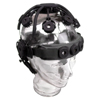 San Diego, CA, USA. September 29, 2011
San Diego, CA, USA. September 29, 2011One year has passed since the commercial launch of our Dry Sensor Interface (DSI) 10/20 system at SfN 2010. We are proud to announce that during this year, we have achieved a 15% manufacturing cost reduction, which we are happy to pass on to you.
The technology is unchanged; QUASAR’s dry sensors still record high
quality EEG signals without skin preparation, gels or fluids. The DSI 10/20
is a wireless headset that positions up to 21 dry sensors at the 10/20 International
System locations. The system is designed for comfortable long-term ambulatory
operation in laboratory or office environments.![]()
Clinical Trial Pilot conducted with DSI 10/20 at UTMC
 Houston, TX, USA. September 25, 2011
Houston, TX, USA. September 25, 2011
Dr. Jeremy Slater, Associate Professor of Neurology at The University of
Texas Health Science Center at Houston, and Director, Texas Comprehensive Epilepsy
Program, and his team of researchers, epileptologists, and EEG technicians,
in collaboration with Advanced Neurometrics Inc (ANI)
recently conducted a clinical evaluation of QUASAR's DSI 10/20.
The purpose of the study was to investigate the suitability and advantages of QUASAR's Dry Sensor Interface for use in clinical settings. The specific aims evaluated in this study were: 1) Time to interpretable EEG, 2) Subjective data quality. For the first aim, EEG technicians recorded the time it took to place a headset on a patient's head, position the sensors through the hair, and get meaningful EEG signals. For the second aim, data recorded from patients with the DSI 10/20 and a clinical wet EEG system were blinded and presented to epileptologists for evaluation of data quality and ability to detect signals of interest.
Preliminary results are encouraging, suggesting that the headset could be put on in an average of 198.9 seconds compared to 872.6 seconds for a comparable wet montage (t-test, statistical significance of p = 0.000040827), and that data quality is comparable between dry sensors and wet electrodes. We look forward to the completion of their study and the publication of their final results.
![]()
QUASAR awarded project from DARPA
 San Diego, CA, USA. September 23, 2011
San Diego, CA, USA. September 23, 2011QUASAR has recently been awarded a research contract from DARPA titled “Practical EEG Headset for Brain-Machine Interfaces”. The goal of this project is to further advance QUASAR’s DSI ambulatory EEG technology to an even greater level of practicality and robustness, which would enable cognitive monitoring solutions in rigorous applied and fielded military environments.
QUASAR presents at IEEE EMBC 2011
 Boston, CA, USA. August 30 - September 2, 2011
Boston, CA, USA. August 30 - September 2, 2011QUASAR was invited to participate in a Cognitive State Assessment Competition, at the IEEE EMBC conference. QUASAR presented results of QStates Cognitive Gauge Performance on the competition data set. See the paper describing the work and results.
QUASAR introduces the Dry Sensor Innovation Challenge
 San Diego, CA, USA. August 29, 2011
San Diego, CA, USA. August 29, 2011QUASAR launches the Dry Sensor Innovation Challenge to promote novel applications of Dry EEG Sensors. This challenge offers researchers whose work would substantially benefit from the use of dry EEG sensors the opportunity to use QUASAR’s revolutionary Dry Sensor Interface (DSI) technology to augment their projects. Exploring the advantages of dry-sensor technologies in clinical, academic, or commercial applications is the principal goal of this competition.
Evaluation of a Dry Electrode System for Electroencephalography: Applications for Psychophysiological Cognitive Workload Assessment
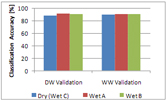 Justin R. Estepp, Jason W. Monnin, James C. Christensen, Glenn F. Wilson
Justin R. Estepp, Jason W. Monnin, James C. Christensen, Glenn F. WilsonA group led by Air Force Research Laboratory personnel conducted a study in which EEG was recorded with both QUASAR's EEG headset and a conventional wet electrode system in order to evaluate its usefulness for monitoring cognitive workload. According to a paper published in the Proceedings of the 54th Annual Meeting of the Human Factors and Ergonomics Society, "results show that the accuracy in cognitive workload assessment obtained with wet electrodes is comparable to that obtained with the dry electrodes.”(See the paper)*
*Reprinted with permission from Proceedings of the Human Factors and Ergonomics Society 54rd Annual Meeting. Copyright 2010 by the Human Factors and Ergonomics Society. All rights reserved.
QUASAR launches DSI 10/20
 DSI
10/20, Launched 11/13/2010
DSI
10/20, Launched 11/13/2010This wireless ambulatory headset positions 21 sensors at 10/20 locations for comfortable long-term wear. The headset integrates with a Physiological Status Monitor (PSM) belt that records ECG, skin temperature and 3-D acceleration. The system includes powerful real-time trainable cognitive state gauges.
QUASAR exihibits at the Society for Neuroscience’s 40th Annual Meeting
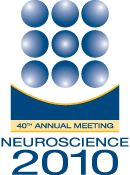
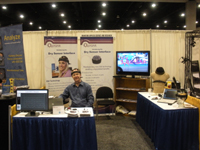 Neuroscience
2010. 11/13-17/2010
Neuroscience
2010. 11/13-17/2010Booth632, San Diego Convention Center, San Diego, CA, USA
QUASAR introduced the DSI 10/20 and PSM systems to the scientific community at this meeting. We held live demonstrations of the system’s wireless recording capabilities and allowed visitors to feel how comfortable the headset is.
Independent validation of QUASAR’s dry EEG sensors confirms performance comparable to wet electrodes
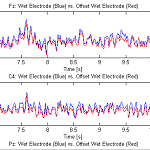 Justin
R. Estepp, James C. Christensen, Jason W. Monnin, Iris M. Davis,
Glenn F. Wilson
Justin
R. Estepp, James C. Christensen, Jason W. Monnin, Iris M. Davis,
Glenn F. WilsonA group led by Air Force Research Laboratory personnel conducted a study in which simultaneous EEG measurements were taken on subjects wearing both a QUASAR EEG headset and conventional wet electrodes. According to a paper published in the Proceedings of the 53rd Annual Meeting of the Human Factors and Ergonomics Society, results “demonstrate that the QUASAR system is capable of collecting EEG data that is comparable to that collected via conventional wet electrodes.”(See the paper)*
*Reprinted with permission from Proceedings of the Human Factors and Ergonomics Society 53rd Annual Meeting. Copyright 2009 by the Human Factors and Ergonomics Society. All rights reserved.
QUASAR
receives SBIR grants from NIH and NSF

 San Diego, CA, USA. September 23, 2011
San Diego, CA, USA. September 23, 2011
QUASAR
has received grants from the National Institute of Health and
the National Science Foundation for scientific investigation of
innovative ideas related to biosensing. Under the NIH funding,
QUASAR will pursue development of a simple, pad-like device to
acquire ECG that can be integrated into a chair for a comfortable,
long-term ECG acquisition interface. Working under NSF funding,
QUASAR will develop an idea for a totally new biosensing technology
that has shown the potential for never-before-seen levels of noise
performance, offering the opportunity to greatly enhance applications
such as EEG-based brain mapping that require precision signal
measurements.![]()
